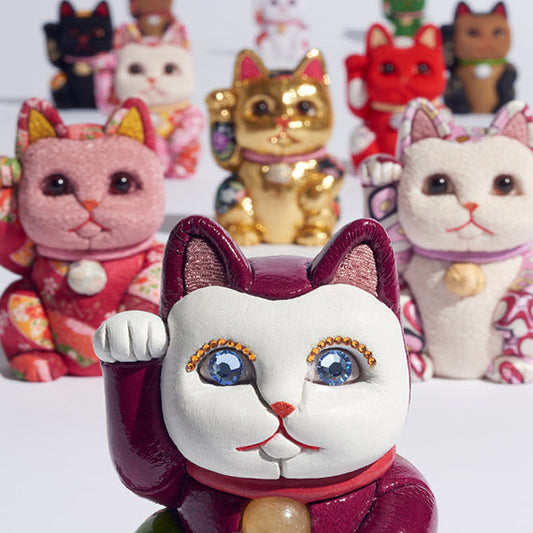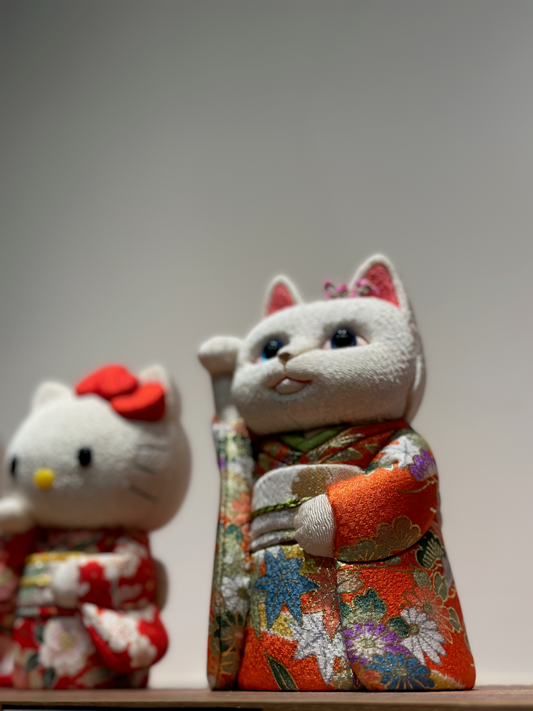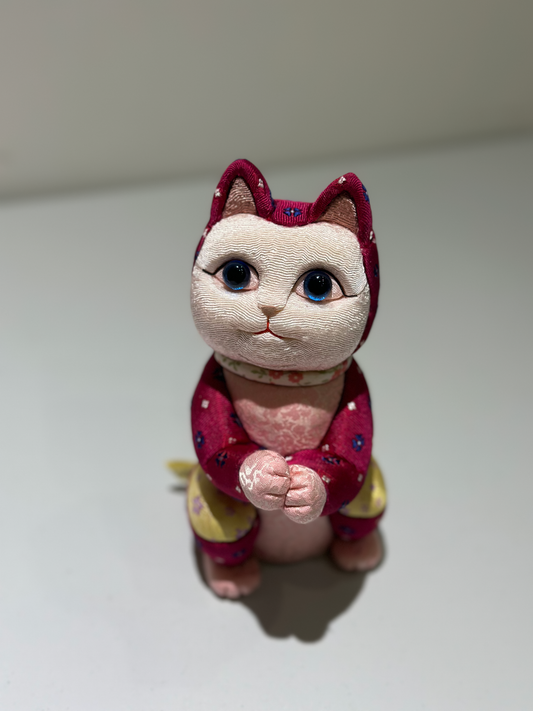
【招き猫】
Persimmonuma Doll 【招き猫】
Awarded as the work of "The Wonder 500" in Japan.
Lucky cats have been loved by Japanese and Orientals since ancient times. Not only are they cute, but they are also believed to bring good luck and fortune. The cat on the right hand attracts wealth, while the cat on the left attracts guests.
Kakinuma dolls use the traditional doll-making technique "kimekomi" (kimekomi), and use different types of high-grade fabrics to cover the beckoning cats made of paulownia. The fabrics used are all traditionally woven for making high-end kimonos, such as Yuzen, Nishijin, Glorious, Kinsha, etc. Contemporary materials such as leather and camouflage fabrics are also used.
In terms of traditional shapes, artists added Swarovski crystals to the eyes of some lucky cats, and added power stones to the bells, which not only increased its delicacy and elegance, but also catered to the contemporary thinking of "body, mind, and soul".
-
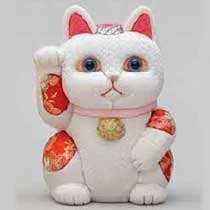
"Feng Shui" Lucky Cat
Lucky cats in traditional form, some styles are equipped with Swarovski crystal eyes and bells embedded with power stones.
Different colors represent different meanings:
------------------
Red [vitality, no disease and disaster relief]
Blue【Self-control・Patience】
Green [Aetna · Fatigue Recovery]
Purple [Ability to exercise and relax]
Peach【Beauty・Luck】
Black 【Evil against evil and evil】
White 【No Stain‧Relaxation】
-
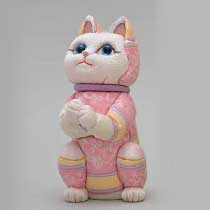
"Star Wish" Cat
Put your hands together and make a wish to God. The "star wish" cat is displayed in the form of wishing and praying to heaven.
------------------
The fabrics used are all traditional weaving of high-end kimonos, such as silk, yuzen, nishijin, glorious, gold, etc., as well as contemporary materials such as leather and camouflage fabrics.
------------------
The "Star Wish" cat has no ideological orientation and is suitable for giving to people of different religious backgrounds.
-
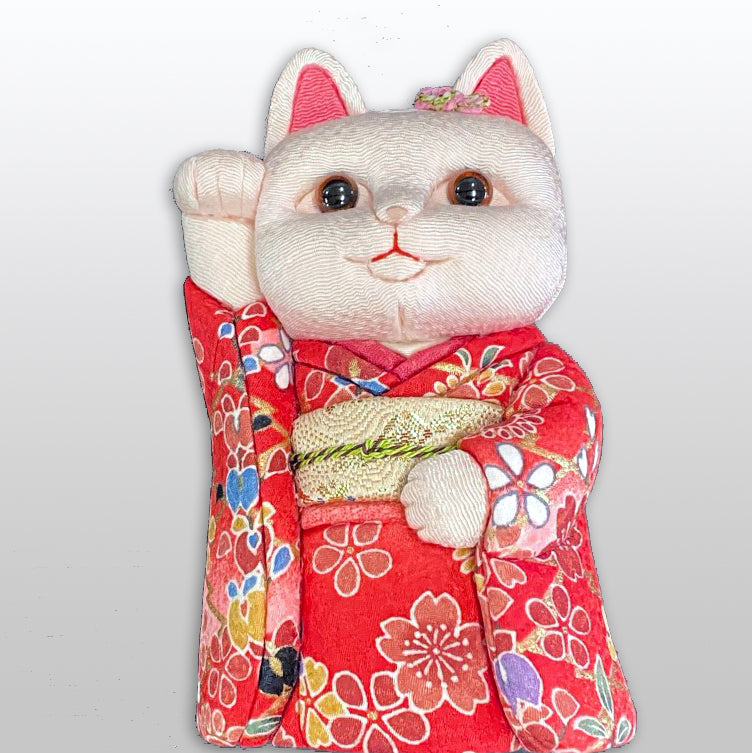
Furisui Lucky Cat
Put on your furisode kimono,
Showcasing the fine craftsmanship of Peinuma dolls.
------------------
The fabrics used are all traditional weaving of high-end kimonos, such as silk, yuzen, nishijin, glorious, gold, etc., as well as contemporary materials such as leather and camouflage fabrics.
-
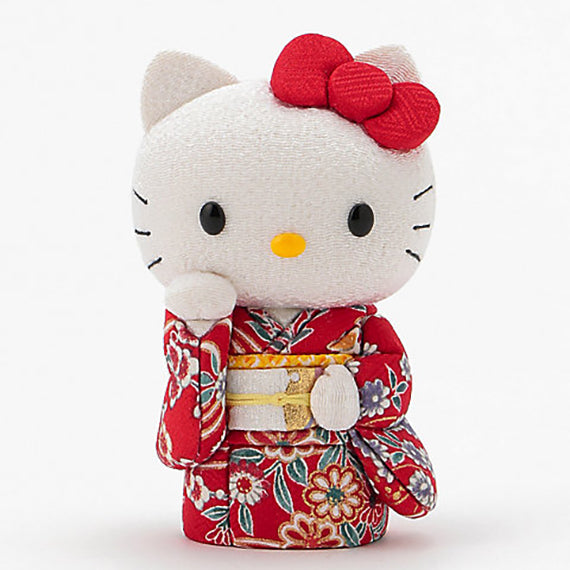
Hello Kitty Sleeve Lucky Cat
The Kitty figure made of high-quality kimono fabric is elegantly dressed in a kimono with sleeves made of real kimono fabric.
While collecting your favorite cartoon characters, you can experience the advanced traditional craftsmanship of Kakinuma dolls.

"Kimome Kome"
"Kimekome" (kimekomi) is a traditional Japanese doll-making technique. Different small grooves are engraved on the clothes joints and folds on the body of the doll, and then various fabrics for making kimonos (such as friends Zen, Nishijin, Guangcai, Jinying, etc.) are embedded in the grooves to create a three-dimensional and layered texture. This technique originated in Kyoto in the Yuanwen period about 270 years ago. In contemporary times, the traditional craft "Edo Doll" designated by the Minister of Economy, Trade and Industry is famous for its manufacture in Tokyo and Saitama.
"Kimomegome" developed vigorously in the Edo period because puppet masters began to move from Kyoto to Edo, which made "Edo-style Kimomegome" flourish, and this skill was called " Edo Kimegome " later.
The doll body of "Kimomegome" has always been made of wood, but because the wood is easy to burst, so since the Meiji period, doll masters have developed paulownia sculptures made of paulownia mixed with clay and have been making it to this day. As for modern times, apart from using paulownia, some are also made of resin.
-

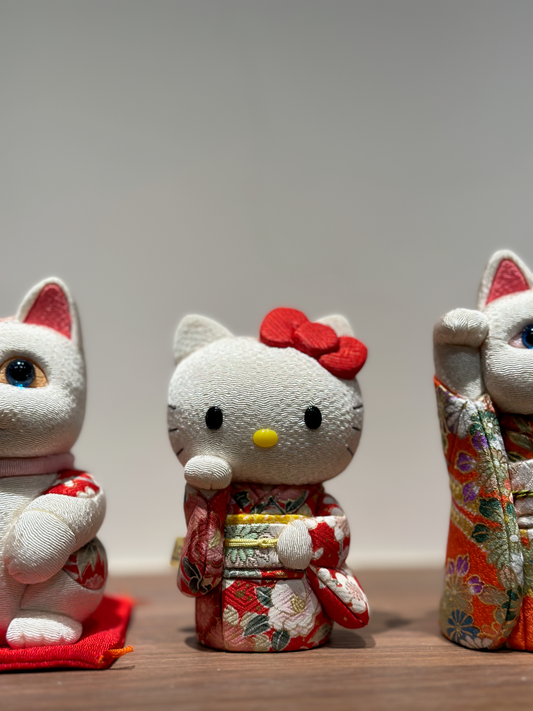 Sold out
Sold outLucky Cat Hello Kitty (Red)
Vendor:柿沼人形Regular price $235.00 CADRegular priceUnit price per -
Lucky Cat Feng Shui (Gold)
Vendor:柿沼人形Regular price $142.00 CADRegular priceUnit price per -
Lucky cat feng shui (white)
Vendor:柿沼人形Regular price $142.00 CADRegular priceUnit price per -
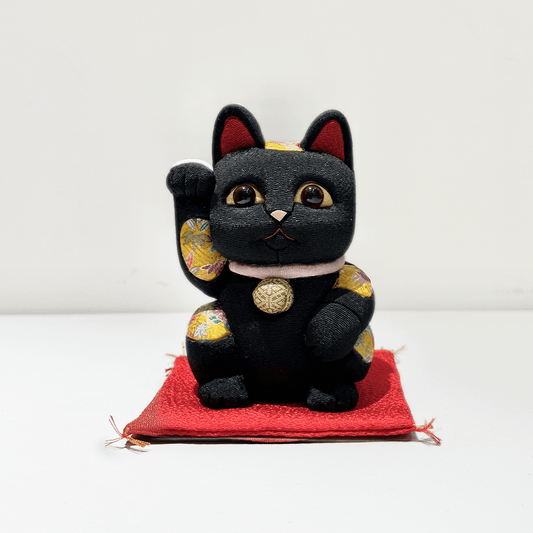
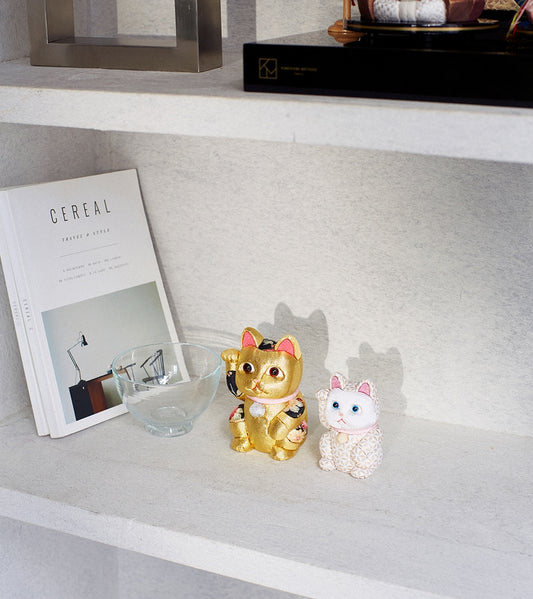 Sold out
Sold outLucky cat feng shui (black)
Vendor:柿沼人形Regular price $142.00 CADRegular priceUnit price per -
Lucky cat vibrating sleeves (golden orange)
Vendor:柿沼人形Regular price $212.00 CADRegular priceUnit price per -
Lucky Cat Star Wish (Positive Silk・Glory)
Vendor:柿沼人形Regular price $209.00 CADRegular priceUnit price per













